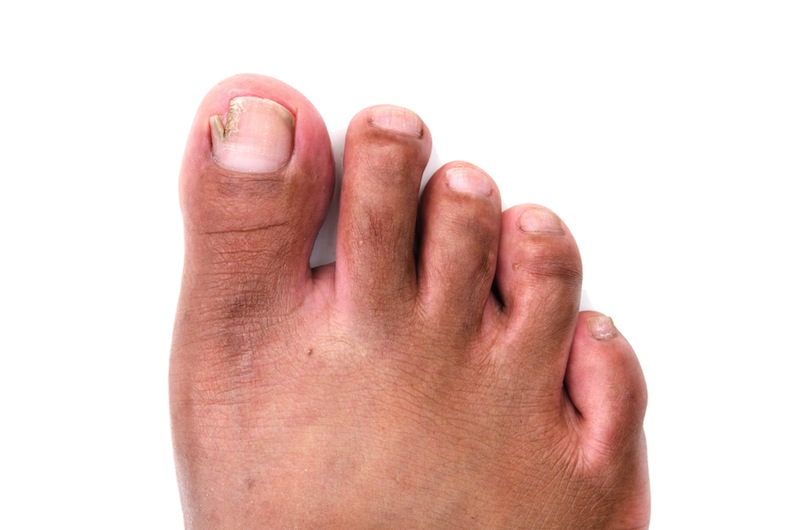The Painful Truth About Ingrown Toenails

Few things can cause as much discomfort as an ingrown toenail. This common foot condition occurs when the edge of a toenail grows into the surrounding skin, causing redness, swelling, and intense pain. In this quick article brought to you by Mountain Spring Podiatry, we share some things you need to know about this common pain in the foot. If you need a licensed podiatrist, or foot doctor, for ingrown toenails treatment in the Mountain Spring area, then call Mountain Spring Podiatry to schedule an appointment today.
What Does an Ingrown Toenail Look Like?
An ingrown toenail can be easily identified by its appearance. An ingrown toenail typically starts as a small, red, and tender area at the corner of the nail. The toenail itself may appear curved or misshapen, and it may be embedded in the skin. As the nail continues to grow into the skin, the area becomes more painful and inflamed. In severe cases, blood and oozing pus may be present.
Aside from the obvious visual cues, ingrown toenails are often accompanied by other symptoms, including pain and tenderness on the affected side of the toe, difficulty wearing shoes or walking, and corns or calluses on the affected toe.
The Risks of Ignoring Ingrown Toenails
Ignoring an ingrown toenail can lead to serious consequences. For one, the surrounding skin can become infected if bacteria enter the wound, and if left untreated, the infection can spread to other parts of the body. The infection can also cause the toenail to thicken and the skin to become swollen and tender to the touch.
Further, ignoring an ingrown toenail can even cause ulcers to develop. The open wound caused by the nail growing into the skin can be slow to heal and can develop into an ulcer. Over time, untreated ingrown toenails can lead to chronic pain and discomfort, making it difficult to walk or wear shoes. Therefore, it’s important to seek treatment for an ingrown toenail as soon as possible to prevent these complications.
Treatment Options for Ingrown Toenails
If you suspect you have an ingrown toenail, it’s important to seek treatment right away to prevent complications. Here are a few treatment options:
- Soak the affected foot in warm water: This can help reduce pain and inflammation and soften the nail, making it easier to trim. Dry your feet well after this!
- Proper nail trimming: Trim the nail straight across and avoid rounding the edges, which can cause the nail to grow into the skin.
- Wearing comfortable shoes: Avoid tight-fitting shoes that put pressure on the toes, which can worsen ingrown toenails and pain.
- Antibiotics: If an infection is present, antibiotics may be necessary to clear it up.
- Surgery: In severe cases, surgery may be necessary to remove the affected portion of the nail.
Looking for a Licensed Podiatrist? Call Now!
If ingrown toenails are interfering with your day-to-day activities, you can call Mountain Spring Podiatry to schedule an appointment with a reliable podiatrist, or foot doctor, today!
